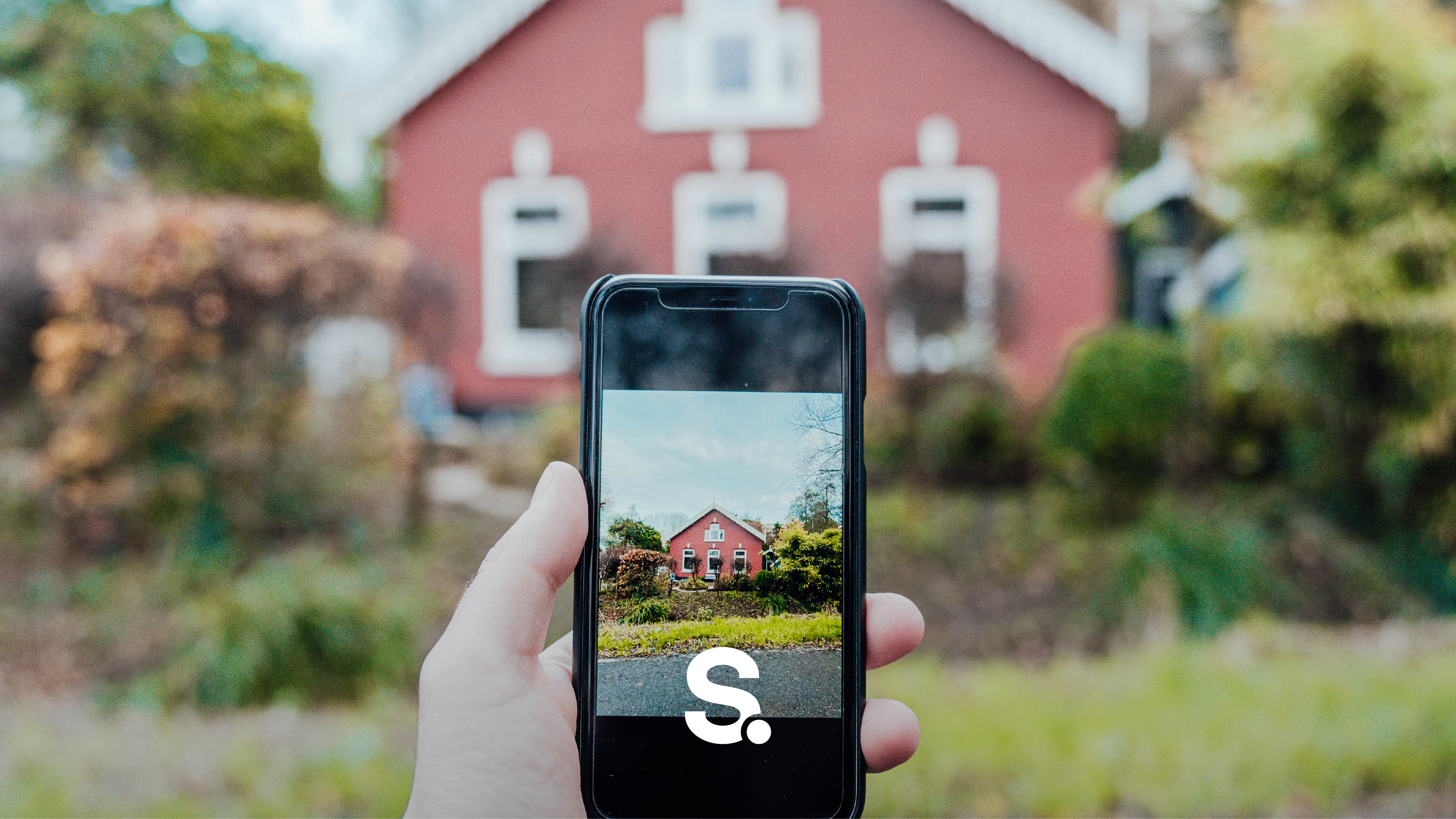![]()
blog
I'm going to visit a property for sale: What I should ask
April 27, 2023
8 min read

If you are in the process of buying a house, whether for the first time or not, you will naturally visit the properties that meet your preferences and/or needs. During this stage, it will be important to take into consideration some fundamental questions and topics that will allow you to have an analytical look so that, in the next stage, you can make a conscious decision and with as much information as possible on your side. Thus, this article seeks to help you create a checklist of issues and topics that you should see safeguarded so that you can, with better results, detect the aspects that may prove to be fundamental to understand if the property under analysis is a good deal or not.
Choose to schedule your visits during the day.
In a daytime visit, you can easily understand which rooms receive natural light and which rooms can be colder and more humid (on less sunny days and if you have doubts about the solar exposure of the property, ask the agent that accompanies you). Be aware that properties with a predominance to the north have less sun exposure than those to the south, factors that will make the house warmer or colder, with light, with more or less moisture, with more or less need for waterproofing in certain areas. In this schedule, you can also see more clearly some problems that may exist in the property.
Observe the state of conservation.
Take this factor into consideration, especially if it is a used property. The analysis should start from the exterior of the property to the interior details. In addition to the exterior state of conservation, you should take a good look at the interior, such as the walls, ceilings, doors, kitchen and bathroom cabinets, tiles, etc. It may seem like excessive zeal, but the truth is that if the state of conservation is not the best, you may have to invest a lot of money in improvement and renovation works.
When visiting the property, pay attention to small details.
The details can make a difference in the value of the property, so look carefully at the finishes of each room, the quality of carpentry, materials, among others. It is important to simulate the layout of each room to understand if, for example, there are enough outlets for your needs, if the rooms hold what is essential to have in them (double bed, desk, sofa, dining table, among others).
After analyzing in more general strokes, the characteristics of the property, it is still important to ask some questions for a more prudent observation, so you should not be afraid to ask them:
What is the value of the property? Is there room for negotiation?
What additional costs are associated with the purchase of the property, such as condominium fees, taxes, or transfer fees?
What is the value and condition of the condominium?
Are there future works planned and budgeted in the condominium? It is essential to understand if, in the case of horizontal property buildings, the condominium is organized, if all owners are meeting their quotas. It is also important to understand if the condominium can cope with the scheduled or expected maintenance and if the costs associated with works outside the budget of the condominium are already in payment or will be an investment that still has to be made.
Has the property ever had any structural or infiltration problems?
Ask about humidity, insulation, ventilation, and plumbing. It is important that you can tell if the house was built with good insulation, if the plumbing has had upgrades, or if the house has moisture problems.
Has the property ever undergone renovations? If so, what kind of renovations were done, when were they done, and why were they necessary?
Asking these questions will allow you to understand what has already been done and anticipate the need for any new work. It will also help you analyze the existence of any deeper problems in the property.
You should also inquire about the neighborhood and services near the property.
In addition to the construction and its quality, there are other relevant factors that can influence your final decision. Examples include the location of the property, transportation options, and nearby services.
Finally, it is recommended to visit the properties you are most interested in again. During a second visit, the property is no longer a novelty, and you will likely focus more on details that may have gone unnoticed during the first visit. Consider visiting at a different time of day (e.g., if the first visit was during the day, visit closer to dinnertime) to get a different perspective. Take advantage of the second visit to clarify any doubts that may have arisen.
********
![]()
Assim, este artigo procura ajudá-lo a criar uma checklist de questões e tópicos que deve ver salvaguardados para que consiga, com melhores resultados, detetar os aspetos que podem revelar-se fundamentais para perceber se o imóvel em análise é ou não um bom negócio.
Opte por marcar as visitas durante o dia.
Numa visita durante dia, consegue facilmente perceber quais são as assoalhadas que recebem luz natural e quais as divisões que podem ser mais frias e húmidas (em dias menos soalheiros e se tiver dúvidas quanto à exposição solar do imóvel, questione o mediador que o acompanha). Tenha a consciência que imóveis com predominância a norte, têm menos exposição solar que os a sul, fatores que farão da casa mais quente ou mais fria, com mais ou menos luz, com mais ou menos humidade, com mais ou menores necessidades de impermeabilizações em determinadas zonas. Neste horário consegue ainda perceber com maior clareza alguns problemas que podem existir no imóvel.
Observe o estado de conservação.
Tenha este fator em consideração, principalmente se for um imóvel usado. A análise deve começar pelo exterior do imóvel até aos detalhes interiores. Para além do estado de conservação exterior, deve analisar bem o estado interior, como as paredes, tetos, portas, os armários da cozinha e da casa de banho, azulejos, etc. Pode parecer excesso de zelo, mas a verdade é que se o estado de conservação não for o melhor, poderá ter de investir bastante dinheiro em obras de melhoria e renovação.
Ao visitar o imóvel tenha atenção aos pequenos detalhes.
Os pormenores podem fazer a diferença no valor do imóvel, por isso, repare com atenção nos acabamentos de cada divisão, a qualidade das carpintarias, materiais, entre outros. É importante simular a disposição de cada divisão para conseguir perceber se, por exemplo, existem tomadas suficientes para as suas necessidades, se as divisões comportam aquilo que é fundamental dispor nelas (cama de casal, secretária, sofá, mesa de jantar, entre outros).
Depois de analisar em traços mais gerais as características do imóvel, não deixa de ser importante fazer algumas questões para uma observação mais prudente e por isso, não deve ter receio de as fazer:
Qual o valor do imóvel? Existe margem de negociação?
Quais os custos adicionais associados à compra do mesmo?
Como taxas de condomínio, impostos ou taxas de transferência.
Qual o valor e estado do condomínio? Existem obras futuras previstas e orçamentadas no condomínio?
É fundamental perceber, no caso de edifícios em propriedade horizontal, se o condomínio se encontra organizado, se todos os condóminos estão a cumprir com as suas quotas, se o condomínio consegue fazer face às manutenções programadas/expectáveis e se os custos associados a obras fora do budget do condomínio, já estão em pagamento ou serão um investimento que ainda terá de fazer.
O imóvel já teve algum problema estrutural ou de infiltrações?
Pergunte pela humidade, isolamento, ventilação e canalização. É importante que consiga perceber se a habitação foi construída com bons isolamentos, se a canalização já sofreu atualizações ou se a casa tem problemas de humidade.
O imóvel já passou por alguma renovação? Se sim, quais, quando e porque foram feitas as últimas obras no imóvel?
Estas questões vão permitir-lhe perceber o que já foi intervencionado de forma a conseguir antever a necessidade de novas obras e, permitem ainda, analisar a existência de problemas mais profundos no imóvel.
Deve perguntar pela vizinhança ou serviços perto do imóvel.
Além da construção e qualidade da mesma, existem outros fatores muito relevantes que influenciam a decisão final. Exemplos claros disso são a vizinhança, os transportes e os serviços existentes.
Por fim, os imóveis que lhe despertaram maior interesse devem ser revisitados, porque numa segunda visita, o imóvel já não é uma novidade e isso fará com que se foque mais nos detalhes e que repare em pormenores que lhe passaram despercebidos numa primeira abordagem. Numa visita posterior, opte ainda por escolher um horário diferente (se a primeira visita foi durante o dia, opte por fazer uma visita mais perto do jantar). Aproveite a segunda visita para esclarecer todas as dúvidas que possam ter surgido posteriormente.
